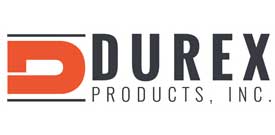The good times continue to roll industrywide.
Of course, today’s market dynamics aren’t exactly perfect. Costs are still a concern of producers, and some construction markets are performing better than others. But producers, manufacturers and dealers largely feel good about the state of the aggregate industry.
“There aren’t a lot of people who are light on sales right now on the producer side,” says Matt Dibble of Dibble Equipment. “People are busy, and things are going strong.”
Similarly, Dibble says equipment suppliers are busy.

“We’re hearing that on the manufacturing side,” he says. “I was talking to a manufacturer who said the last two years were record years – and they’re not alone. The last two years for our company were record years, and I think a lot of producers are in the same boat.”
Capital Aggregates’ Jamie Jones agrees about the current pace of business.
“Last year was a record year for us [in] both sales and production,” says Jones, COO of Capital Aggregates, which is based in Jefferson City, Missouri. “Most of our [business] is based in the Midwest.
We’re seeing strong DOT work in our areas for this coming year. January was a little bit slow weather wise in the Midwest. We saw the dips starting off this year. February and March have bounced back in a big way. Everything is looking strong moving forward.”
Nonbuilding and nonresidential construction are two markets driving business for Missouri producers like Capital Aggregates.
“I think everybody was fairly concerned during 2023 from a sales volume perspective that the combination of inflation and interest rates was going to put a damper on any private work,” says Chris Williams, vice president of operations at Capital Aggregates. “It just doesn’t feel like it happened.
Whatever drop-off there may be, IIJA (the Infrastructure Investment & Jobs Act), combined with state transportation funding, has swooped in to take up any lessening of volumes we’re going to have.
“Industrial, warehousing and other private-sector work seems to still be going strong in the places we’re at,” Williams adds. “I think it’s a good story.”
Other perspectives

Challenges remain, but producers and suppliers successfully cleared a series of hurdles that surfaced over the last few years.
So, who’s to say the challenges currently in play won’t be overcome.
“I think people are very optimistic,” says Ian Edwards, vice president responsible for global sales at Major Wire. “We’ve had a lot of challenges. It seems once you get through one you get to another. We had the pandemic and then we had supply chain issues. But I think everyone is very optimistic about this year.
Everyone’s kind of working together. I think we’re going to have a very strong and positive 2024.”
Costs are arguably the top challenge for producers right now. Conquering them remains a key to profitability.
“If you think of the major things [producers] consume, costs are going up every day,” says Ken Albaugh, director of sales and services at Xylem. “So, it’s how do you manage those increasing costs and still be competitive in the marketplace. There [are] more competitors, and some of the consolidation of the industry, too, on the producer side has really driven that competitiveness to almost some levels where they have to come up with ways to do things better, faster and more efficient.”
As TCI Manufacturing’s Chad Colby describes, producers made adjustments on the purchasing front in recent years to position themselves for success.
“Everybody knows now you can’t just go buy something tomorrow and get it in two weeks,” says Colby, marketing director at TCI. “The expectation of the customer has finally gotten to where if you have plans in 2025, you better be talking about it now. Quite honestly, we’ve got a lot of people talking about ‘26 already. They’re not doing that because it’s different. They’re doing it because that’s the nature of the industry that we’re in.”
Managing editor Jack Kopanski contributed to this article.












